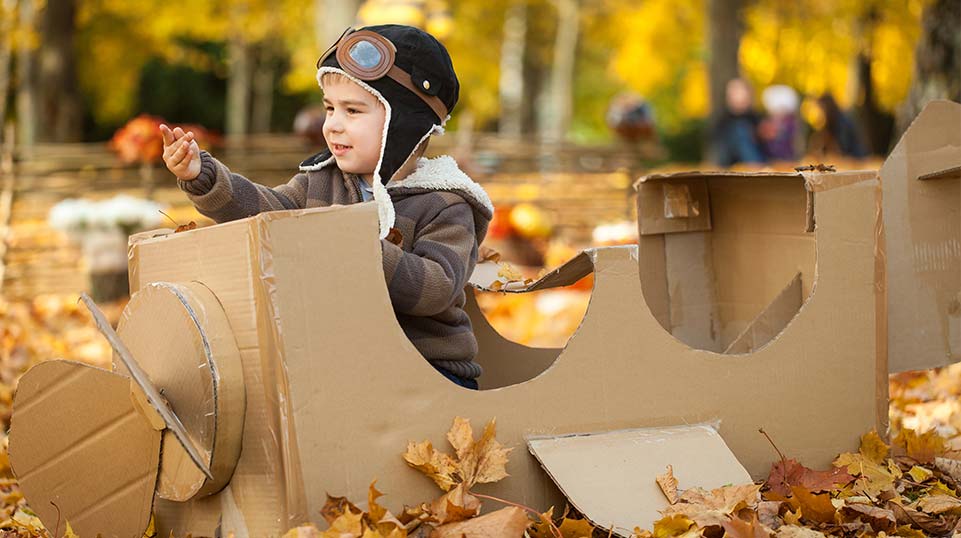Blog

Simply Spooktacular: Celebrating Halloween with Special Needs Kids
Children Activities, Parent Education
Halloween season is filled with costumes, candy, and all things spooky, but for some families, it can come with more “boo hoos” than “boos.” The excitement, noise, and sensory overload that come with this holiday can be a lot for any child—especially those with developmental or sensory differences. The good news is that with a little preparation and an open mind to different ways of celebrating, you and your child can have a spooktacular time together!
At Westside, we strive to be inclusive of all families. While this article discusses autism and sensory differences, the tips apply to all children, whether neurotypical, neurodiverse, or with other unique needs. Halloween should be a treat for everyone!
Costume Chaos: Choosing the Right Costume
Many Halloween costumes are made from inexpensive materials that can be itchy, scratchy, or uncomfortable—especially for children with sensory differences. The unfamiliar fabrics and textures may feel overwhelming, leading to big reactions. If your child struggles with clothing that’s outside their normal comfort zone, there are ways to make the costume experience more enjoyable.
First, let your child help pick out their costume, and consider buying a few options to try on ahead of time. This allows you to return anything that isn’t a good fit. Pay attention to tags, seams, or materials that might bother your child—either avoid these costumes altogether or use a seam ripper to carefully remove any annoying tags.
If traditional costumes are too uncomfortable, try making your own using regular, comfy clothing. Here are a few simple ideas:
- Spiderman: Red sweatpants paired with a Spiderman t-shirt or sweatshirt.
- Skeleton: Cozy skeleton pajamas.
- Halloween-Themed Pajamas: Keep it simple with Halloween PJs!
- Favorite Color: Ask your child their favorite color, and create a simple, comfortable costume around it! For example, if they love blue, they can wear blue sweatpants and a blue t-shirt, and voilà—they’re dressed as the color “blue”! This is an easy, sensory-friendly option that still feels special without the discomfort of typical costumes.
Don’t put too much pressure on the costume. If your child decides they don’t want to wear it, that’s okay! They can always go dressed as themselves. Bring along a change of clothes they love, just in case they want to switch out of the costume during the festivities. You can also size up to allow them to wear their regular clothes underneath for extra comfort.
Adaptive Costumes:
Target offers adaptive Halloween costumes designed for those in wheelchairs or who need discreet functional openings to allow access to tubing, small objects or other devices.
Pro tip: Check social media for creative adaptive and alternative costume ideas, and explore Autism Speaks for autism-friendly, budget-friendly options!
Desensitizing to Halloween Fears
Many children have fears surrounding ghosts, spiders, darkness, and other common Halloween themes. These fears can make the whole season challenging, as it’s hard to avoid spooky imagery throughout October. To help your child feel more comfortable, try these ideas to gradually introduce them to the sights and sounds of Halloween:
- Read Halloween-themed books. Visit your local library and ask for age-appropriate, non-scary book recommendations to ease your child into the holiday.
- Explore Halloween sections at stores. Take a walk through places like Home Depot or Walmart where Halloween displays are set up. This helps your child get used to the decorations in a controlled way.
- Prepare for sensory overload. While Halloween is meant to be fun, things like loud noises, fog machines, strobe lights, or creepy costumes can overwhelm kids with sensory sensitivities. Exposure to these in small, manageable doses ahead of time can help.
- Color Halloween images. Print out pictures of Halloween characters like vampires or monsters and let your child color them. This can make the images feel less intimidating.
- Play at home. Turn Halloween into a fun, low-stress game by letting your child practice “scaring” you by jumping out from behind doors or corners.
Halloween Dress Rehearsal and Preparation Tips
Preparing for Halloween in advance can help your child feel more comfortable and confident on the big night. One way to practice is by rehearsing at home. Ring the doorbell, say “Trick or Treat,” take one piece of candy, and practice saying “Thank you.” You can also rehearse answering questions like, “What are you?” to help them feel more prepared when people ask.
For nonverbal children, consider creating cards they can hold up with messages like “Trick or Treat” or “Thank You.” Alternatively, the parent can say these phrases for them and assist with picking out candy. If you and your child are comfortable disclosing their disability, you may want to use a sign to explain their needs, such as this one from Autism Speaks. While disclosure is a personal decision, it can be an empowering step toward self-advocacy.
To help your child feel more prepared, create a visual schedule outlining the evening’s events, giving them a clear sense of what to expect. The All About Halloween story from Autism Speaks is also customizable, allowing you to personalize it with your own pictures and text for an added touch of familiarity.
If you decide to Trick or Treat, don’t feel pressured to visit too many houses. Start with just a few—maybe one block—and stay close to home to avoid exhaustion. If your child is sensitive to noise, consider having them wear headphones to block out loud or overwhelming sounds. You may also want to bring along their favorite fidgets to help them manage sensory overload and stay calm during the excitement.
Sensory-Friendly Halloween Events for Kids
There are plenty of alternative ways to celebrate Halloween that make the holiday fun and inclusive. Many families find that local church events, community centers, and park district gatherings offer sensory-friendly environments where children can enjoy the festivities without feeling overwhelmed. For families who prefer to stay in, handing out candy or simply enjoying a quiet night at home can be a wonderful way to mark the occasion.
Here are a few sensory-friendly Halloween events in Illinois:
- Emagine Theatres in Batavia and Frankfort will be hosting specialty screenings for movies this October! There will be open caption and sensory friendly screenings on specific dates. Click the links for more information.
- Autism-Friendly Activities in Illinois: Check out a variety of inclusive events at Be Like Buddy.
- Sensory Sensitive Halloween at Chuck E. Cheese: Enjoy a quiet and welcoming atmosphere during Halloween Sensory Sensitive Sunday.
- Inclusive Events in the Chicago Suburbs by WDSRA, SEASPAR, and NEDSRA: Explore full calendars of inclusive events such as Halloween Trolley rides, Boo at the Zoo, and Pumpkin Patch visits.
Remember, trick-or-treating isn’t a requirement for enjoying Halloween. There are many fun alternatives to celebrate:
- Organize a candy or toy scavenger hunt throughout the house.
- Participate in a local Trunk-or-Treat event.
- Watch a spooky movie or curl up with a good Halloween-themed book.
The goal is to find what works best for your child, so they can enjoy the holiday in a way that feels comfortable and fun for them.
Halloween Safety Tips
Before heading out for trick-or-treating, take a quick picture of your child in their costume. This can be helpful in case you get separated, as you’ll have a recent photo to show if needed.
If you’ll be out after dark, consider giving your child something that glows, such as light-up sneakers, glow sticks, or reflective gear, to make them easy to spot. It’s just as important for them to be able to find you quickly, so ensure you’re wearing something visible too, like bright clothing or a glow-in-the-dark accessory.
If your child tends to run off, ensure they have ID, like a bracelet or card with your contact info. Air tags are also a great way to track their location and can be useful beyond Halloween!
Halloween for Children With Food Sensitivities
For children with food sensitivities, allergies, or those who use a G-tube, Halloween can be especially challenging. A great way to handle this is by setting up a candy swap at the end of the night. After trick-or-treating, your child can trade their candy for fun toys or prizes. This ensures they can still enjoy the experience without worrying about food they can’t safely consume.
Approximately 1 in 13 children has a food allergy. Trick-or-treating can be a very stressful experience for families trying to avoid common allergens like tree nuts, wheat, soy, and peanuts. For some children, certain sweets can even trigger incontinence or other health issues, adding to the concern.
The Teal Pumpkin Project is a fantastic initiative that promotes inclusivity for kids with food allergies. To participate, simply place a teal pumpkin outside or display a free printable sign. If your child has a food allergy, you can use their map to find participating locations. This initiative helps make Halloween more accessible to all children.
How Therapy Supports Your Child During Halloween and Other Holidays
Therapies like Applied Behavior Analysis (ABA), Speech Therapy, Physical Therapy, and Occupational Therapy help kids develop the skills they need to thrive in different settings—whether it’s following routines or adapting to the unpredictability of holidays like Halloween. With the right support and some creative strategies, your child can feel confident and comfortable in whatever spooky adventure comes their way. 🎃
Westside Children’s Therapy offers private, 1:1 therapy in our bright and kid-friendly clinics located throughout the Chicago suburbs. If you are interested in services at Westside, please click the link below or call (815) 469-1500 and our team will walk you through the process. We look forward to showing you The Westside Way!




